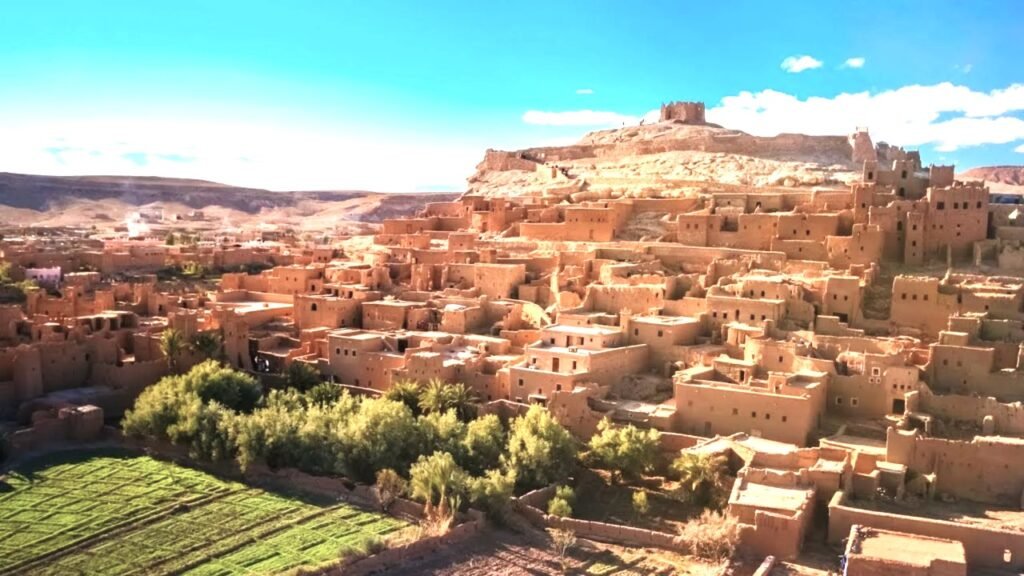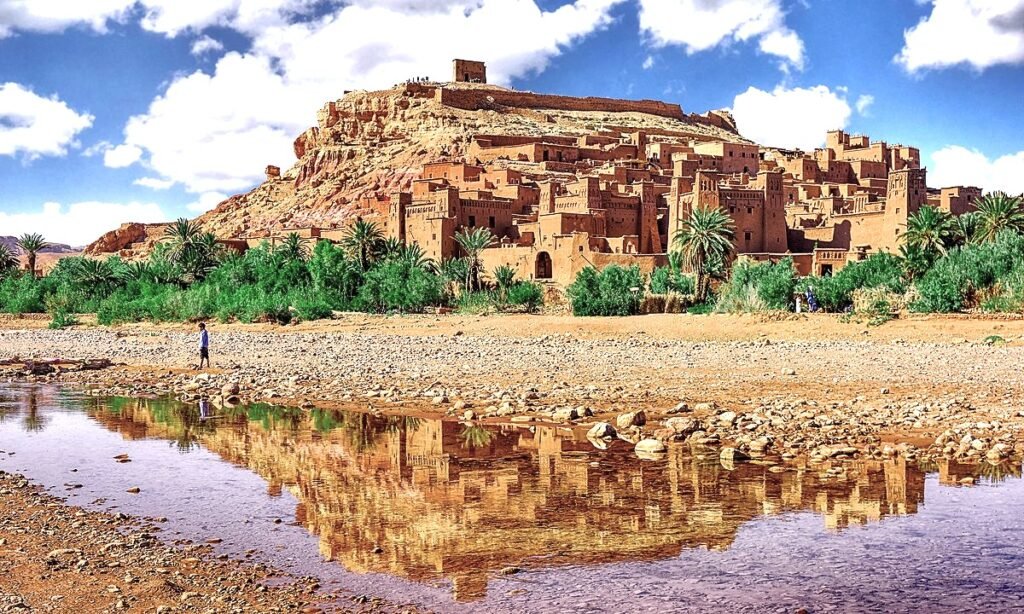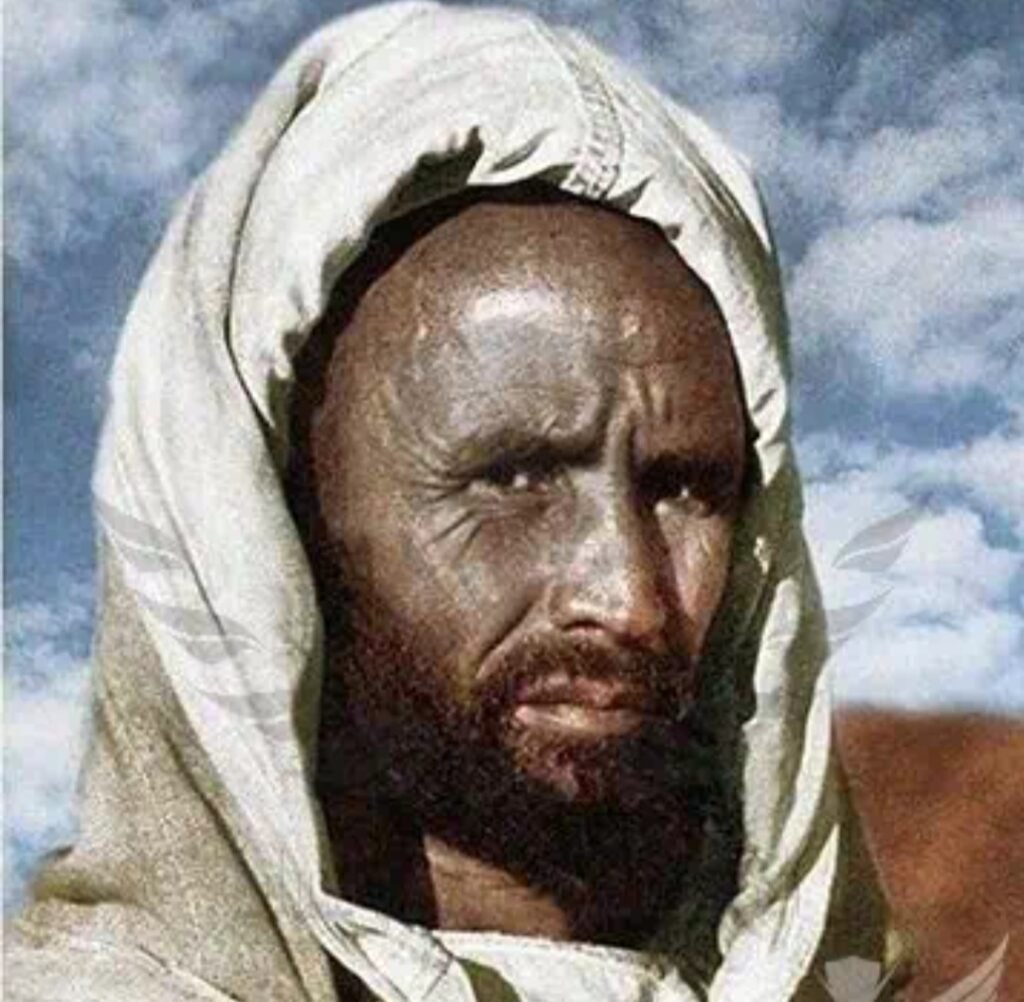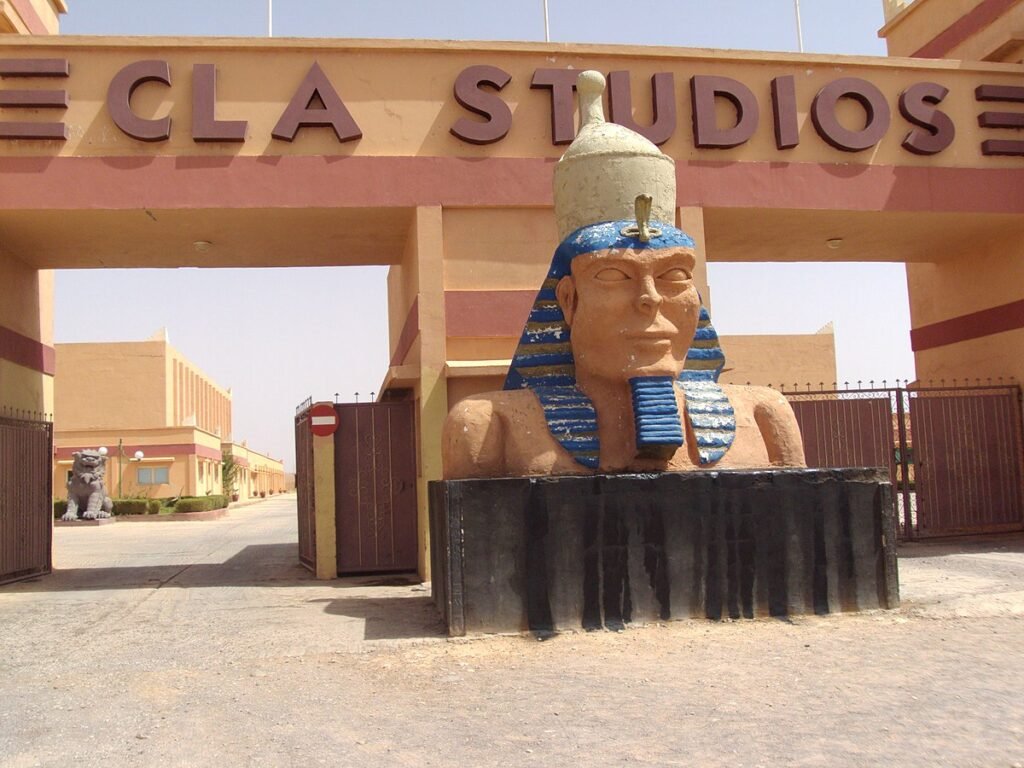Ouarzazate: From Resistance Theater to World Cinema

Ouarzazate is not just a dot on the Moroccan tourism map; it is a natural masterpiece that tells stories of natural beauty, a rich historical legacy, and an enduring cinematic legacy. Located in the southeast of the Kingdom of Morocco, on the edge of the Sahara Desert, this city embraces enchanting geographical contrasts, towering castles that tell the secrets of the past, and film studios that have earned it the title of "Cinema Capital of Africa and the Arab World."
Gateway to the desert and paradise of oasis
Ouarzazate enjoys a unique strategic location, as it is located at the crossroads of... Draa Valley From the south andDades Valley From the north, which historically made it a starting point for trade caravans heading to sub-Saharan Africa. The city overlooks Lake Mansour Al-Dhahabi Artificial, forming a blue waterscape in the heart of the barren land, it provides a vital source of irrigation and hydroelectric power.
Its nature is a vast plain (Sous Plain) surrounded by amazing mountain ranges, the most important of which are: High Atlas Mountains Capped with snow in the winter, it provides a breathtaking scene that contrasts with the warmth of the surrounding desert. This diverse environment—mountains, valleys, green oases (such as the Foum Zguid oasis), and the desert—is what gives it the raw beauty that has attracted filmmakers from around the world.
Warm cinematic sun
The climate of Ouarzazate is continental and dry most of the year, characterized by:
- hot summer:The temperature rises significantly, but the air is bearable due to the dry air.
- cold to moderate winter:Cold nights where the temperature may reach zero, while the days are mostly sunny and warm.
- Low rainfallIt boasts a large number of sunny days throughout the year (more than 300), a golden advantage for the film industry, ensuring filming can be scheduled without fear of weather fluctuations.
Clay reeds tell a history of resilience

The most prominent feature of Ouarzazate's urban architecture is: reedsThese are fortified castles or palaces constructed of mud, stone, and wood. The uniqueness of these kasbahs lies not only in their dazzling beauty, but also in their intelligent architecture, which adapts to the harsh environment:
- local materialsThe use of clay (adobe and brick) provides excellent thermal insulation, whether the weather is hot or cold.
- Defensive designIt is characterized by its high, thick walls, tall towers, and a network of narrow, intertwined alleys that make it difficult to invade.
- decorative artInside, the walls are decorated with stucco (gypsum) carvings and carved woodwork that reflect the skill of local craftsmen.
- Famous reedsThe most famous of all Kasbah of Ait Ben Haddou (Classified as a UNESCO World Heritage Site), which is a perfect example of southern Moroccan architecture. In addition, there is the Taourirt Kasbah in the heart of Ouarzazate, which was the ancient seat of the city's pasha.
A stronghold of steadfastness against the colonizer
Ouarzazate was not only the jewel of the south, but also a stronghold of resistance against French colonialism. The region served as an incubator for many Amazigh tribes who led a fierce resistance. Their resistance was characterized by:

- organized resistanceIt was led by local leaders, the most famous of whom were: Aso Obsalam...who became an icon of popular resistance. He was able to unite the tribes against the French advance.
- fierce battlesMany battles took place in the passes and gorges of the surrounding Atlas Mountains, where the resistance fighters used their deep knowledge of the terrain to confront the French regular army.
- The steadfastness of the reedsThe citadels were used as impregnable fortresses of resistance, withstanding attacks for a long time until colonialism was able to completely subjugate the region in the 1930s after using air strikes.
Cinema Capital: Hollywood of Africa
This is the title that stuck with Ouarzazate, making it a global destination. The story began in the early 1960s when the British director David Lean Ait Benhaddou region to film his epic movie “Lawrence of Arabia” (1962)From that moment on, the city's doors opened to the world of cinema.
Reasons for its transformation into a cinematic capital:
- Amazing geographical diversity:Ouarzazate offers in a short space natural scenes fit for films from different eras: deserts, mountains, oases, dry rivers (feudal lands), and vast expanses resembling the surface of Mars!
- stable sunny weather:Allows a large number of uninterrupted shooting days.
- skilled laborTraditional crafts (wood and plaster carving, blacksmithing, carpentry) contributed to the decorations, and local residents excelled as extras and technicians.
- Moroccan government supportBy providing facilities and subsidies for international film productions.
- Building giant studiosIt is the cornerstone of this industry.
The most important studios:

- Atlas CorporationThe first and most famous studio, established in 1983, contains permanent sets of ancient Egyptian, Roman and desert cities.
- Studios CLAA huge and modern cinema complex, one of the largest in Africa and the world.
The most important international productions filmed in Ouarzazate:
- Lawrence of Arabia (1962) – David Lean
- The mummy (1999) – Stephen Sommers
- The wrestler (2000) – Ridley Scott
- Asterix Obelix: Mission Cleopatra (2002)
- Kingdom of Heaven (2005) – Ridley Scott
- Horror Island (2010) – Martin Scorsese
- Prayer for France (2014)
- Cleopatra (2023) -Upcoming series
- Game of Thrones series (Game of Thrones):Where areas in Ouarzazate were represented by the city of “Bent” in Essous.
Results and implications:
- economicallyThe film industry has created thousands of job opportunities for Moroccans, including artists, technicians, and craftsmen.
- CulturallyIt put Morocco on the world cinema map and introduced Moroccan and Arab culture.
- TouristicallyFilm tourism has become an important source of income, with tourists flocking to visit filming locations and famous sets.
In conclusion, Ouarzazate is more than just a city; it is a living natural and historical heritage, a creative oasis that has transformed its golden sands into a giant cinematic screen that showcases world-class films. It is a place where the magic of the past and the dazzle of the present come together in a single scene, providing an endless source of inspiration for directors and visitors from around the world.





